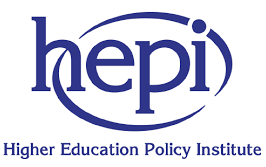The higher education landscape in England has been evolving rapidly thanks in part to the government’s 2017 Higher Education and Research Act (HERA). One way this has happened is through the Act paving the way for the establishment of new higher education institutions (HEIs) across England. These institutions promise to bridge gaps in educational opportunities, enhance employability, and prepare students to address 21st-century challenges. Our recent research sheds light on the experiences of setting up and developing these new HEIs, raising the question: do they contribute to greater diversity in higher education?
One of the key drivers behind the establishment of these new HEIs is the desire to address regional imbalances in higher education opportunities. In some cases, these institutions have been set up in regions where higher education options and access are limited. These new institutions not only increase access to post-18 educational opportunities but also align education with local employer needs and skills shortages, fostering regional economic development.
Conversely, some new HEIs have chosen to establish themselves in major multicultural cities, allowing them to easily attract a diverse range of students, including international students. This approach reflects a commitment to diversity on a global scale, but also reflects the sector’s dependency on international students to provide a sustainable income.
The process of setting up a new HEI involves creating robust structures and procedures in areas such as student admissions, staff recruitment and external collaborative relationships. Starting a university from scratch allows HEIs to take radical and fresh approaches to these rather than tinkering with the traditional models that already exist. For example, many of the new HEIs claim that academic grades are not the primary judgement for admitting students. Instead they consider the importance of the personal attitudes and the potential of the applicant. They assessed this through the use of broader admission measures, such as the submission of ‘selfie’ videos. Additionally, industry collaborations have played a pivotal role in ensuring that these institutions remain relevant to the needs of local industries. Through partnerships with sector skills groups and industry experts, new HEIs have developed curricula that are up-to-date and directly applicable to the modern workplace.

